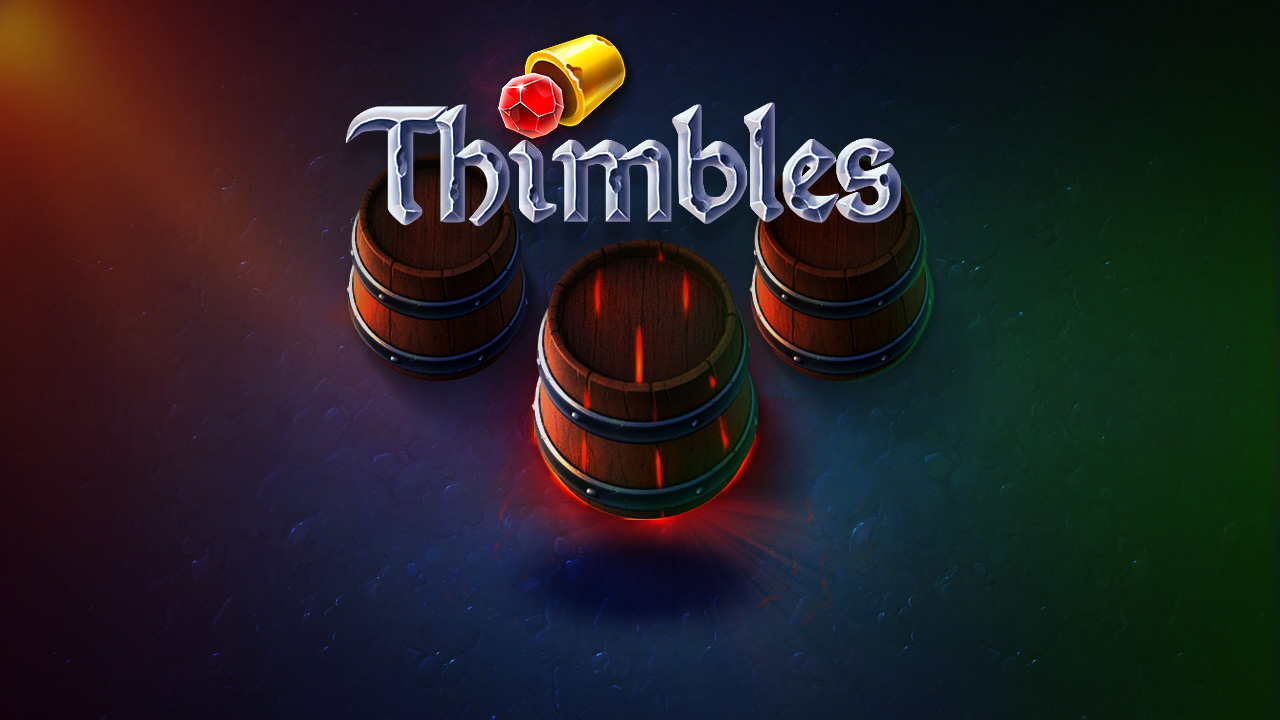The thimble games have long been a staple of traditional entertainment, offering a simple yet captivating challenge that tests memory, concentration, and hand-eye coordination. The premise of the game is straightforward: players must track an object hidden beneath one of several thimbles or cups as they are shuffled rapidly. Despite its simplicity, the game has remained popular for centuries due to its exciting pace and the mental challenge it presents. Whether played for fun at parties or in competitive settings, Thimble games continue to captivate players of all ages. This article will explore the mechanics of Thimble games, their historical significance, variations, and why they remain a favorite pastime today.

Mechanics and Rules of Thimble Games
The basic rules of Thimble games are simple, making it easy for players to pick up and enjoy. To start, players need three thimbles (or cups) and a small object, typically a ball or coin. The object is placed under one of the thimbles, and then the shuffler begins moving the thimbles around quickly, making it difficult for the guesser to track the location of the object. Once the shuffle ends, the guesser must choose which thimble is hiding the object.
While the rules are easy to understand, the game becomes challenging due to the speed of the shuffle and the need for the guesser to focus and remember the position of the object. Skilled players can use misdirection or deceptive techniques to confuse their opponents, making it even harder to follow the object.
Basic steps to play Thimble games
To play Thimble games:
-
Place the object under one of the thimbles.
-
Shuffle the thimbles quickly and smoothly.
-
The guesser must choose the correct thimble hiding the object.
These simple steps allow for a fast-paced and fun experience, ideal for quick rounds with friends or in casual settings.
The History of Thimble Games
Thimble games have a long and rich history, dating back to at least the 17th century. They were initially popularized by street performers and traveling tricksters, often as part of carnival games or sideshows. The game, sometimes called the "shell game" or "thimble-and-ball," was traditionally used as a form of entertainment for crowds, and it was often accompanied by betting, where spectators would wager money on their ability to guess the correct thimble.
Over time, Thimble games evolved from a gambling activity into a more casual form of entertainment. Today, they are commonly played at family gatherings, parties, or fairs, and they are no longer associated with betting but rather as a fun way to test focus and memory.
Key moments in Thimble game history
-
Originally a gambling game in the streets.
-
Evolved into a casual game for fun at parties and fairs.
-
Remains a popular challenge for improving memory and coordination.
The game's transition from gambling to recreational play helped make it more accessible and family-friendly.
Different Variations of Thimble Games
While the core mechanics of Thimble games remain the same, there are several variations that add extra challenges or twists to the traditional gameplay. In some versions, multiple objects are hidden under the thimbles, requiring the player to track more than one item at a time. Other versions incorporate timed rounds, where the player must guess the correct thimble within a certain time limit.
Competitive play often involves multiple rounds, with players taking turns as the shuffler and the guesser. Some people also add a misdirection element, where the shuffler purposefully tries to confuse the guesser by changing their rhythm or using their hands to block the guesser's view.
Common variations of Thimble games
Popular versions include:
-
Multiple objects hidden under the thimbles.
-
Timed rounds for added pressure.
-
Competitive rounds where players alternate as shuffler and guesser.
These variations provide more complexity and increase the excitement of the game.
Table: Comparing Thimble Games with Other Classic Trick Games
| Game | Number of Objects | Betting Element | Popularity |
|---|---|---|---|
| Thimble Games | 1 or more | Optional | Moderate |
| Shell Game | 3 | Yes | High |
| Cup and Ball | 1 | Yes | High |
This table compares Thimble games with other trick games, such as the Shell Game and Cup and Ball, emphasizing the number of objects used and the betting elements involved.
The Appeal of Thimble Games
The enduring appeal of Thimble games can be attributed to their simplicity and the mental challenge they present. Unlike many modern games that require expensive equipment or complex rules, Thimble games only require a few simple items, making them accessible and easy to set up. The quick pace of the game keeps players engaged, while the need to concentrate and remember the object’s location exercises both the mind and reflexes.
Moreover, Thimble games are highly social, making them ideal for parties, family gatherings, or casual hangouts. Players can challenge one another in a lighthearted way, creating a fun and competitive atmosphere. The lack of a need for a large setup or significant preparation also makes Thimble games incredibly convenient and adaptable to different settings.
Reasons why Thimble games are appealing
Thimble games remain popular for the following reasons:
-
They are easy to set up and require minimal equipment.
-
The game challenges memory and concentration.
-
It can be played socially, adding a fun competitive element.
These factors help keep the game enjoyable for all ages.
Conclusion
Thimble games continue to captivate players with their simple rules, fast pace, and mental challenge. Whether played casually among friends or in competitive settings, they offer a fun and engaging way to test focus and memory. With its long history and various modern adaptations, Thimble games remain a timeless choice for anyone looking for an entertaining and accessible game. By mastering the techniques and strategies involved, players can enjoy a satisfying and rewarding experience every time they play.

 Saving...
Saving...